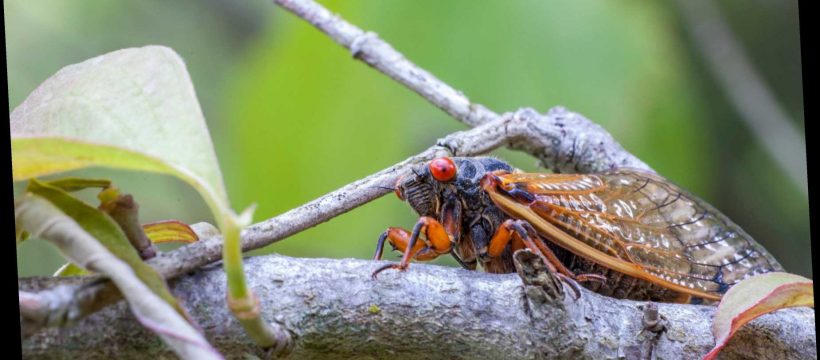A legion of cicadas that have spent nearly two decades underground are predicted to emerge and fly across 15 states this spring and summer.
Formally known as periodical cicadas, or Magicicada, the insects spend 13 to 17 years beneath the ground in a slow period of maturation during which time they feed on the roots of plants and trees.
Eventually the juvenile cicadas ― known as nymphs ― grow to adulthood and leave the soil in large groups before mating and dying, usually three to four weeks after their emergence.
Scientists have dubbed the regularly occurring cicada populations “broods,” and according to a 2020 interview with Michigan State University entomologist Gary Parsons, “nearly every year somewhere in the eastern U.S., a brood will be emerging.”
“The 17-year broods seem to occur mostly in the northern U.S. and 13-year broods emerge more to the south,” Parsons said. “In some years, both a 13- and 17-year brood will emerge, but not in the same location. In some years, no cicadas will emerge.”
Brood X, which last emerged in 2004, is the name of the group that is expected to rise this year, and entomologists expect to spot the cicadas across Delaware, Georgia, Illinois, Indiana, Kentucky, Michigan, New Jersey, New York, North Carolina, Ohio, Pennsylvania, Tennessee, Virginia, Washington, D.C., and West Virginia.
In an interview with Newsweek, Michael J. Raupp, emeritus professor of entomology at the University of Maryland, said that between Georgia and New York there would “surely be trillions emerging” as part of a “strange survival strategy” to overwhelm potential predators and ensure that the brood will rise again in another 17 years — in 2038.
Despite their extreme numbers, the insects themselves are harmless, and Raupp described their once-every-two-decades emergence as a “a wonderful opportunity for millions of people to witness and enjoy a remarkable biological phenomenon in their own backyard that happens nowhere else on the planet.”
RELATED…
Related
Trending
Source: Read Full Article






